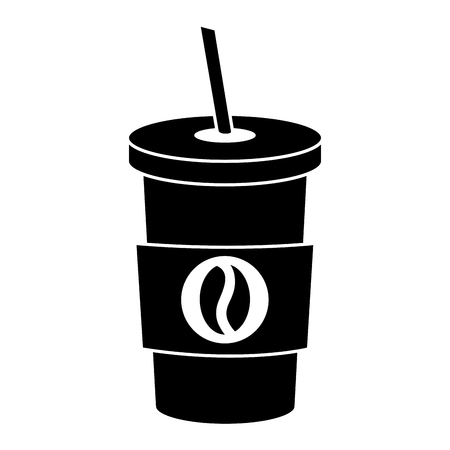1. The Origins and Rise of American Iced Coffee
Iced coffee may seem like a modern-day trend, but its roots in the United States go back over a century. While cold coffee drinks have existed around the world for ages—think of Japanese cold brew or Vietnamese iced coffee—the American version began taking shape in the early 20th century.
Early 1900s: From Novelty to Necessity
In the early 1900s, iced coffee started appearing in American cookbooks and diners, often as a summer refreshment. At first, it was brewed hot and then chilled over ice—a simple twist on traditional hot drip coffee. It wasn’t yet mainstream, but it was gaining traction, especially during warmer months.
Post-War America and the Rise of Convenience
After World War II, with the boom in refrigeration and home appliances, chilled beverages became more accessible. Coffee drinkers began experimenting with keeping leftover morning brews in the fridge to enjoy later. This laid the groundwork for a new kind of daily ritual—cold caffeine on demand.
The 1960s–1980s: Iced Coffee Goes Commercial
During this period, iced coffee started showing up at restaurants and coffee shops across the U.S., though it was still considered niche. Fast food chains and diners offered it occasionally, usually sweetened and served with cream. But it wasn’t until specialty coffee culture took off that iced coffee truly found its place.
1990s to Today: A Cold Brew Boom
As American coffee culture exploded in the 90s—with major players like Starbucks entering every neighborhood—the demand for iced options grew rapidly. Coffee shops began offering multiple variations: sweetened or unsweetened, light or dark roast, dairy or plant-based milk. By the 2010s, cold brew joined the scene, offering a smoother and less acidic alternative to traditional iced coffee.
Iced Coffee vs. Cold Brew: What’s the Difference?
| Feature | Iced Coffee | Cold Brew |
|---|---|---|
| Brewing Method | Brewed hot, then chilled over ice | Steeped in cold water for 12–24 hours |
| Taste Profile | Bolder, more acidic | Smoother, less acidic |
| Brew Time | Minutes | Hours (slow extraction) |
| Caffeine Content | Moderate (varies by ratio) | Typically higher per ounce |
An Icon of On-the-Go Culture
Today, iced coffee is more than just a drink—it’s part of American lifestyle branding. Whether you’re sipping from a mason jar at brunch or grabbing a to-go cup on your morning commute, iced coffee fits perfectly into fast-paced routines. Its customizable, refreshing, and available everywhere—from gas stations to artisanal cafes.
Fun Fact:
The popularity of iced coffee surges every summer—and interestingly, even in colder states like Minnesota or Massachusetts, die-hard fans sip it year-round!
The rise of American iced coffee reflects both innovation and adaptability—two qualities that continue to define how we drink our favorite brew today.
2. Brewing Basics: How to Make the Perfect American Iced Coffee
When it comes to classic American iced coffee, brewing it right makes all the difference. Whether youre looking for a smooth, mellow flavor or a bold, refreshing kick, the way you brew your coffee sets the tone. Here’s how to get started with two of the most popular methods—cold brew and flash brew—along with some helpful tips on grind size, coffee-to-water ratio, and bean selection.
Cold Brew Method
Cold brew is all about patience. This method involves steeping coarse ground coffee in cold water for 12 to 24 hours. It results in a smooth, less acidic drink that’s perfect for hot summer days.
How to Make Cold Brew
- Grind Size: Coarse (like sea salt)
- Ratio: 1 cup of coffee grounds to 4 cups of cold filtered water
- Time: Steep for 12–24 hours in the fridge
- Filter: Use a fine mesh strainer or coffee filter before serving
Flash Brew Method (Japanese Iced Coffee)
If you prefer a brighter, more aromatic cup, flash brew is a quicker alternative. This method brews hot coffee directly over ice to lock in flavor and aroma instantly.
How to Make Flash Brew
- Grind Size: Medium (similar to drip coffee)
- Ratio: Use a 1:15 ratio of coffee to total water (half of which should be ice)
- Brew Time: About 2–4 minutes using pour-over or drip method
- Tip: Use slightly more coffee than usual to account for ice dilution
Coffee-to-Water Ratio Guide
The right ratio can make or break your iced coffee. Here’s a simple guide to help you adjust based on your preferred strength:
| Coffee Strength | Coffee Amount (per 1 cup water) |
|---|---|
| Mild | 1 tablespoon |
| Medium | 1.5 tablespoons |
| Strong | 2 tablespoons |
Selecting the Right Beans
The type of beans you use plays a huge role in flavor. For classic American iced coffee, here are some bean suggestions based on taste preferences:
| Taste Preference | Recommended Bean Type |
|---|---|
| Smooth & Chocolatey | Medium roast from Central or South America (like Colombian or Guatemalan) |
| Bright & Fruity | Light roast African beans (like Ethiopian or Kenyan) |
| Bold & Nutty | Dark roast blends from Sumatra or Brazil |
Quick Tips for Better Brewing
- Always use fresh beans: Grind just before brewing for best flavor.
- Filtered water matters: It improves both taste and clarity.
- Avoid over-extraction: Especially with cold brew—don’t steep too long.
No matter which method you choose, dialing in your grind size, ratios, and beans will help you create that perfectly balanced glass of iced coffee every time.

3. Sweeteners and Flavor Additions: Classic and Contemporary Options
When it comes to American iced coffee, how you sweeten and flavor it can make all the difference. From old-school classics to trendy café favorites, there are plenty of ways to customize your cup. Let’s take a look at both traditional and modern options that are loved across the U.S.
Classic Sweeteners
Most American cafés start with simple syrup—it’s easy to mix into cold drinks and doesn’t leave any gritty sugar at the bottom of your cup. Heres a quick breakdown of classic sweeteners:
| Sweetener | Description | Common Use |
|---|---|---|
| Simple Syrup | A 1:1 ratio of sugar and water, dissolved over heat | Standard in most iced coffees |
| Honey Syrup | Honey mixed with hot water for easier blending | Popular in more natural or organic-focused cafés |
| Brown Sugar Syrup | Sugar with molasses notes, adds depth and warmth | Used in seasonal drinks like brown sugar iced lattes |
Flavored Syrups and Modern Twists
Coffee shops across the U.S. have embraced flavored syrups as a way to turn a basic iced coffee into something special. From vanilla to lavender, here are some popular options:
| Flavored Syrup | Taste Profile | Seasonal or Year-Round? |
|---|---|---|
| Vanilla | Smooth and creamy; pairs well with milk or cream | Year-Round |
| Caramel | Rich and buttery with sweet notes | Year-Round, but peaks in fall |
| Pumpkin Spice | Spiced blend of cinnamon, nutmeg, and clove | Fall Favorite (Sept–Nov) |
| Peppermint | Cool and refreshing flavor profile | Winter Seasonal (Nov–Dec) |
Dairy and Milk Alternatives for Flavor & Texture
The milk you choose can also add natural sweetness and change the mouthfeel of your iced coffee. Many Americans now opt for dairy alternatives not just for health reasons, but also for taste.
| Milk Type | Taste & Texture |
|---|---|
| Whole Milk | Creamy and slightly sweet; traditional choice in diners and chains like Dunkin’ or Starbucks |
| Oat Milk | Naturally sweet with a thick texture; popular vegan option with great frothing ability for cold foam toppings |
| Almond Milk | Lighter body with a nutty note; widely available in national cafés |
Additions That Elevate Your Iced Coffee Game
- Cinnamon – Sprinkle on top or mix into milk for subtle spice.
- Cocoa Powder – Adds a mocha twist when stirred into the brew.
- Nitro – Infuses coffee with nitrogen gas for a creamy texture without dairy or sweeteners.
- Cold Foam – A whipped topping made from milk or alt-milk, often flavored (like vanilla or salted caramel).
- Coconut Cream – A rich, tropical addition perfect for summer blends.
Taste Tip:
If youre brewing at home, try combining vanilla syrup with oat milk for a smooth, café-style iced coffee that’s naturally sweet without being overpowering.
The variety of sweeteners and flavor additions is one of the reasons why American iced coffee continues to evolve while staying rooted in its classic appeal. Whether youre sticking with traditional simple syrup or experimenting with new flavors like pumpkin spice oat milk lattes, theres always room to make it your own.
4. Serving It Right: Ice, Cups, and American Presentation Styles
When it comes to classic American iced coffee, how its served is just as important as how its brewed. Presentation plays a big role in the overall experience, and Americans have developed some distinct preferences when it comes to their chilled coffee drinks.
Ice: Crushed vs. Cubed
The type of ice used in iced coffee can change the texture and even the flavor balance of the drink. In the U.S., crushed ice is a popular choice because it chills the coffee quickly and adds a slushy texture that many people love. However, some prefer larger ice cubes that melt slower, keeping the drink strong for longer.
| Ice Type | Texture | Melting Speed | Common Use |
|---|---|---|---|
| Crushed Ice | Fine and slushy | Fast | Coffee shops, fast food chains |
| Cubed Ice | Solid chunks | Slow | Specialty cafes, home brewers |
Cups: Clear and Branded
In the U.S., presentation often starts with the cup itself. Most American iced coffees are served in clear plastic cups, allowing customers to see the layers of coffee, milk, and ice. This visual appeal is especially important for social media sharing — think Instagram-worthy swirls and gradients.
Why Clear Cups Matter:
- Visual Appeal: Shows off coffee layers and mix-ins like syrups or cream.
- Branding: Cafes often use logo-printed cups for marketing.
- Convenience: Lightweight and disposable for on-the-go lifestyles.
Add-Ons That Americans Love
A classic American iced coffee isn’t complete without a few personalized touches. From sweet toppings to fun straws, these extras make each drink unique.
| Add-On | Description | Popular Brands/Chains Using It |
|---|---|---|
| Whipped Cream | A creamy topping that adds sweetness and visual flair. | Starbucks, Dunkin |
| Syrup Drizzles (e.g., caramel, mocha) | Poured over whipped cream or inside the cup for flavor and aesthetics. | Dutch Bros, Peet’s Coffee |
| Colorful Straws or Dome Lids | Makes sipping easier while adding personality to the drink. | Boba shops, independent cafés |
The American Iced Coffee Experience
Serving iced coffee in America goes beyond just pouring cold brew into a cup. Its about creating an enjoyable sensory experience — from the crunch of crushed ice to the eye-catching swirl of cream. Whether youre brewing at home or running a café, paying attention to these small details can make all the difference in delivering that authentic American iced coffee vibe.
5. Regional Variations and Popular U.S. Trends
When it comes to classic American iced coffee, where you are in the country can make a big difference in how your drink is brewed, sweetened, and served. From the laid-back vibes of the West Coast to the traditional flavors of the South, iced coffee has taken on unique regional twists that reflect local tastes and lifestyles.
West Coast: Trendy & Health-Conscious
On the West Coast, especially in cities like Los Angeles, San Francisco, and Seattle, iced coffee trends lean toward health-conscious and plant-based options. Cold brew is king here—smooth, less acidic, and steeped for hours. You’ll often find oat milk or almond milk as default add-ins, with natural sweeteners like agave syrup or date syrup replacing traditional sugar.
Popular West Coast Iced Coffee Options
| Drink Style | Main Ingredients | Sweetener |
|---|---|---|
| Oat Milk Cold Brew | Cold brew + oat milk | Agave syrup or none |
| Iced Americano with Almond Milk | Espresso + water + almond milk | No sweetener or stevia |
The South: Sweet & Traditional
In the Southern United States—from Georgia to Louisiana—iced coffee is often inspired by the region’s love for sweet tea and rich flavors. Here, you’re more likely to find pre-sweetened iced coffee served strong with cream and sugar already mixed in. Some cafes even serve it “New Orleans-style,” brewed with chicory for an extra bold taste.
Popular Southern Iced Coffee Options
| Drink Style | Main Ingredients | Sweetener |
|---|---|---|
| Southern Sweet Iced Coffee | Drip coffee + cream | Sugar or simple syrup (pre-mixed) |
| New Orleans-Style Iced Coffee | Chicory cold brew + milk | Cane sugar or condensed milk |
Northeast: Strong & Bold Flavors
Cities like New York and Boston favor strong brews and no-fuss presentations. Iced coffee here is usually made from hot-brewed drip coffee poured over ice—quick, bold, and efficient. While some locals take it black, flavored syrups like hazelnut or vanilla are popular too.
Northeast Favorites
- Iced Black Coffee: Hot drip coffee over ice with no milk or sweetener.
- Iced Hazelnut Coffee: Drip coffee with hazelnut syrup and optional cream.
The Midwest: Comfort & Convenience
The Midwest tends to embrace cozy flavors and easy-to-make options. Drive-thru chains are popular here, offering iced coffees with creamy textures and indulgent flavors like mocha or caramel. Ready-to-drink bottled iced coffees also have a strong presence in this region.
Midwest Must-Trys
- Iced Mocha: Brewed coffee mixed with chocolate syrup and milk over ice.
- Bottled Iced Coffee: Store-bought options like Starbucks Frappuccino or Dunkin’ Cold Brew in bottles.
A Quick Look at Regional Preferences
| Region | Iced Coffee Style | Milk Preference | Sweetener Type |
|---|---|---|---|
| West Coast | Cold brew with plant-based milks | Oat or almond milk | Agave syrup or none |
| South | Sweeter blends, chicory cold brew | Cream or condensed milk | Sugar or cane syrup (pre-sweetened) |
| Northeast | Brewed over ice, bold flavors | Dairy or half-and-half (optional) | Syrups like hazelnut or vanilla |
| Midwest | Creamy drive-thru favorites & bottled drinks | Dairy-based creams/milkshakes style mix-ins | Sugar-heavy syrups like mocha & caramel |
This wide variety of regional preferences shows just how versatile American iced coffee can be. Whether you prefer something light and unsweetened or rich and indulgent, there’s a version out there that fits your taste perfectly.

